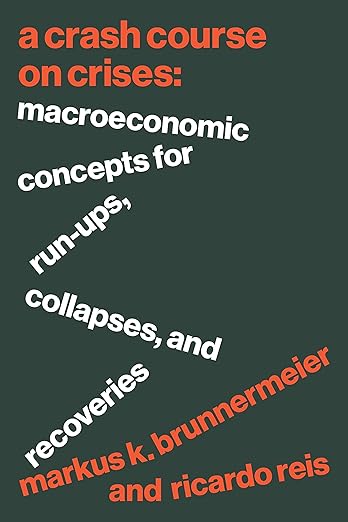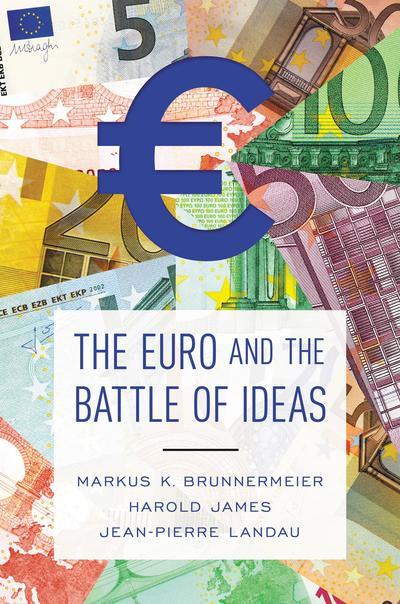A crash course on crises
macroeconomic concepts for run-ups, collapses, and recoveries
- ISBN: 9780691221106
- Editorial: Princeton University Press
- Fecha de la edición: 2023
- Lugar de la edición: Princeton. Estados Unidos de Norteamérica
- Encuadernación: Cartoné
- Medidas: 23 cm
- Nº Pág.: 123
- Idiomas: Inglés

With alarming frequency, modern economies go through macro-financial crashes that arise from the financial sector and spread to the broader economy, inflicting deep and prolonged recessions. A Crash Course on Crises brings together the latest cutting-edge economic research to identify the seeds of these crashes, reveal their triggers and consequences, and explain what policymakers can do about them. Each of the book's ten self-contained chapters introduces readers to a key economic force and provides case studies that illustrate how that force was dominant. Markus Brunnermeier and Ricardo Reis show how the run-up phase of a crisis often occurs in ways that are preventable but that may go unnoticed and discuss how debt contracts, banks, and a search for safety can act as triggers and amplifiers that drive the economy to crash. Brunnermeier and Reis then explain how monetary, fiscal, and exchange-rate policies can respond to crises and prevent them from becoming persistent. With case studies ranging from Chile in the 1970s to the COVID-19 pandemic, A Crash Course on Crises synthesizes a vast literature into ten simple, accessible ideas and illuminates these concepts using novel diagrams and a clear analytical framework
1 Introduction
1.1 Crashes
1.2 Organization of the Book
1.3 Uses of the Book
1.4 Acknowledgments
Part I. growing fragilities: the run-up to crises
2 Bubbles and Beliefs
2.1 A Model of Bubbles with a Keynesian Beauty Contest
2.2 The Japanese Bubble of the Mid-1980s
2.3 The Internet Bubble of 1998–2000
3 Capital Inflows and Their (Mis)allocation
3.1 A Model of Misallocation
3.2 The Seeds of the Euro Crisis: Portugal’s Twenty-First Century Slump
3.3 Chile’s 1970s Liberalization and 1982 Crash
4 Banks and Their Cousins
4.1 Modern and Shadow Banks
4.2 U.S. Subprime Mortgages and Securitization
4.3 The Spanish Credit Boom of the 2000s
Part II. Crashes: triggers and amplifiers
5 Systemic Risk, Amplification, and Contagion
5.1 Strategic Complementarities, Amplification, Multiplicity
5.2 Systemic Risk in the Irish Banking Sector in the 2000s
5.3 The Emerging Markets’ Storm of 1997–98
6 Solvency and Liquidity
6.1 Debt and the Challenging Illiquidity-Insolvency Distinction
6.2 The Run on the German Banking System in 1931
6.3 The Greek Sovereign Debt Crisis of 2010–12 and the IMF
7 The Nexus between the Private and Public Sectors
7.1 The Diabolic/Doom Loop
7.2 European Banks and Their Sovereigns in 2007–10
7.3 Argentina’s 2001–02 Crisis
8 The Flight to Safety
8.1 Safe Assets
8.2 Borrowing Costs in the Euro Area: The 2010–12 Crisis
8.3 The Pandemic Flight to Safety of 2020
Part III. Policies and recoveries
9 Exchange Rate Policies and the Speed of Recoveries
9.1 A Model of Exchange Rates and Recovery
9.2 The Mexican Tequila Crisis of 1994–95
9.3 The Lasting Stagnation from the 2008 Global Financial Crisis
10 The New Conventional Monetary Policy
10.1 Reserve Satiation and Quantitative Easing
10.2 The Bank of Japan’s Innovations since 1998
10.3 The Euro Area Yield Curve during Crisis
11 Fiscal Policy and the Real Interest Rates
11.1 Savings and Investment, Revisited
11.2 The Rise of Savings during the 2020 Pandemic
11.3 The End of the U.S. Great Depression
Part IV. Parting words
12 Conclusion










